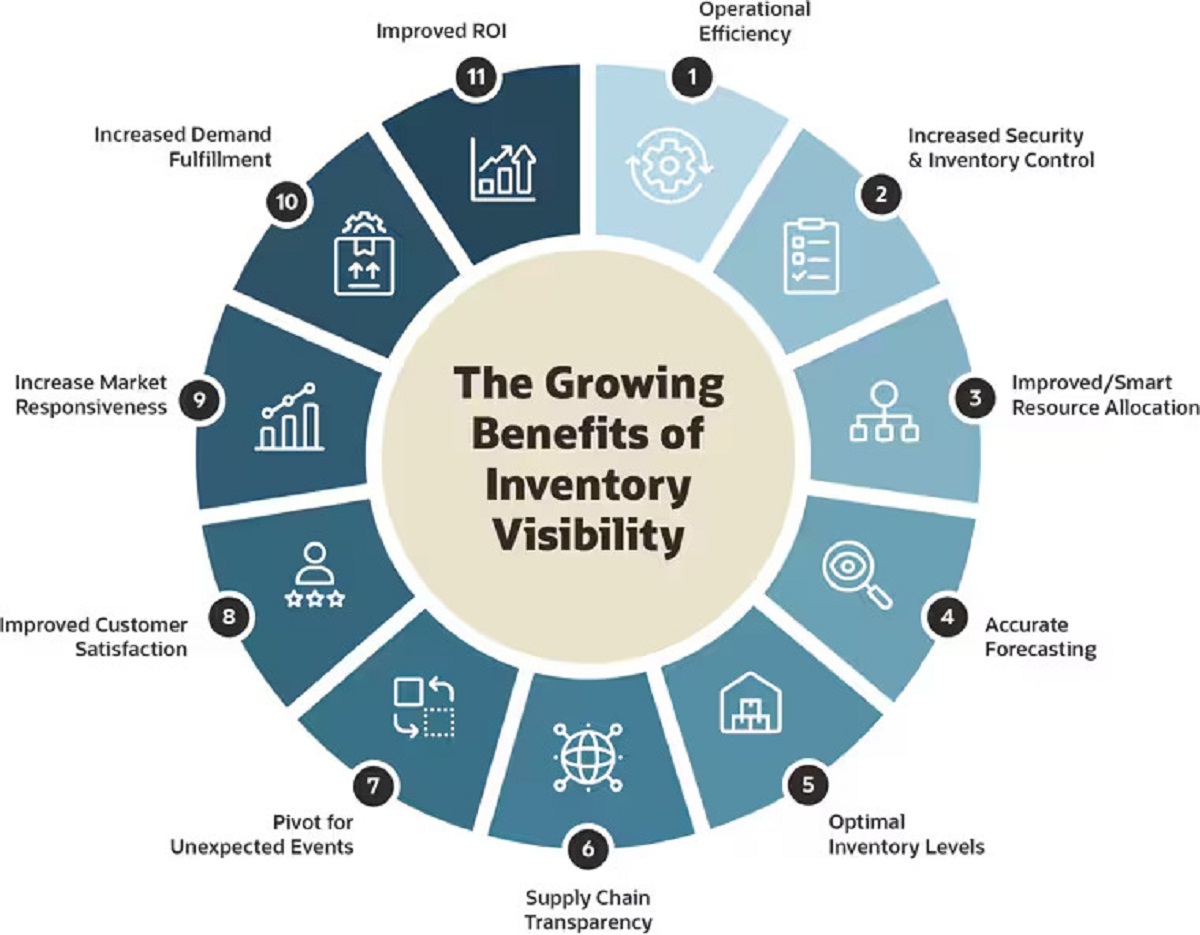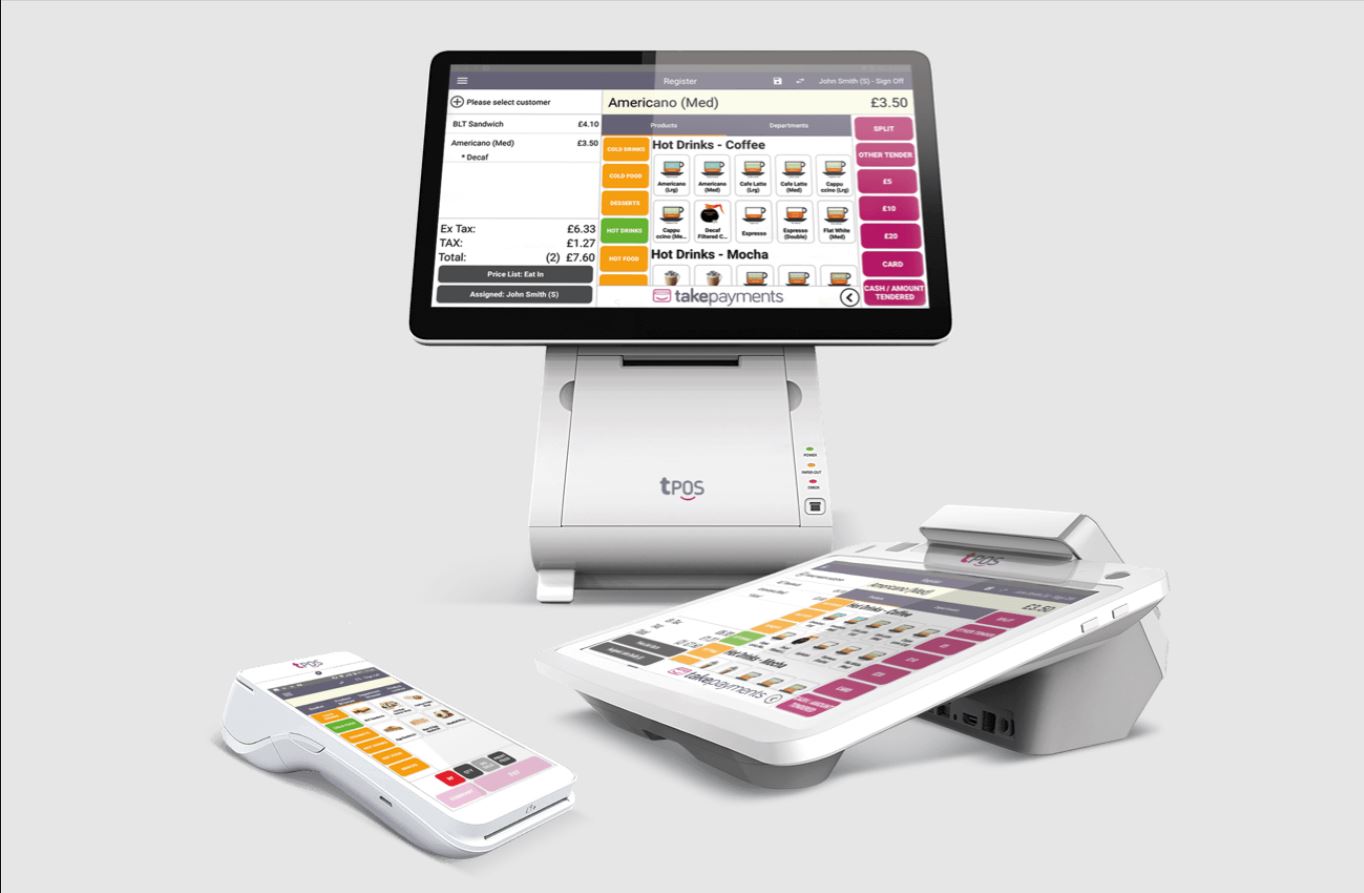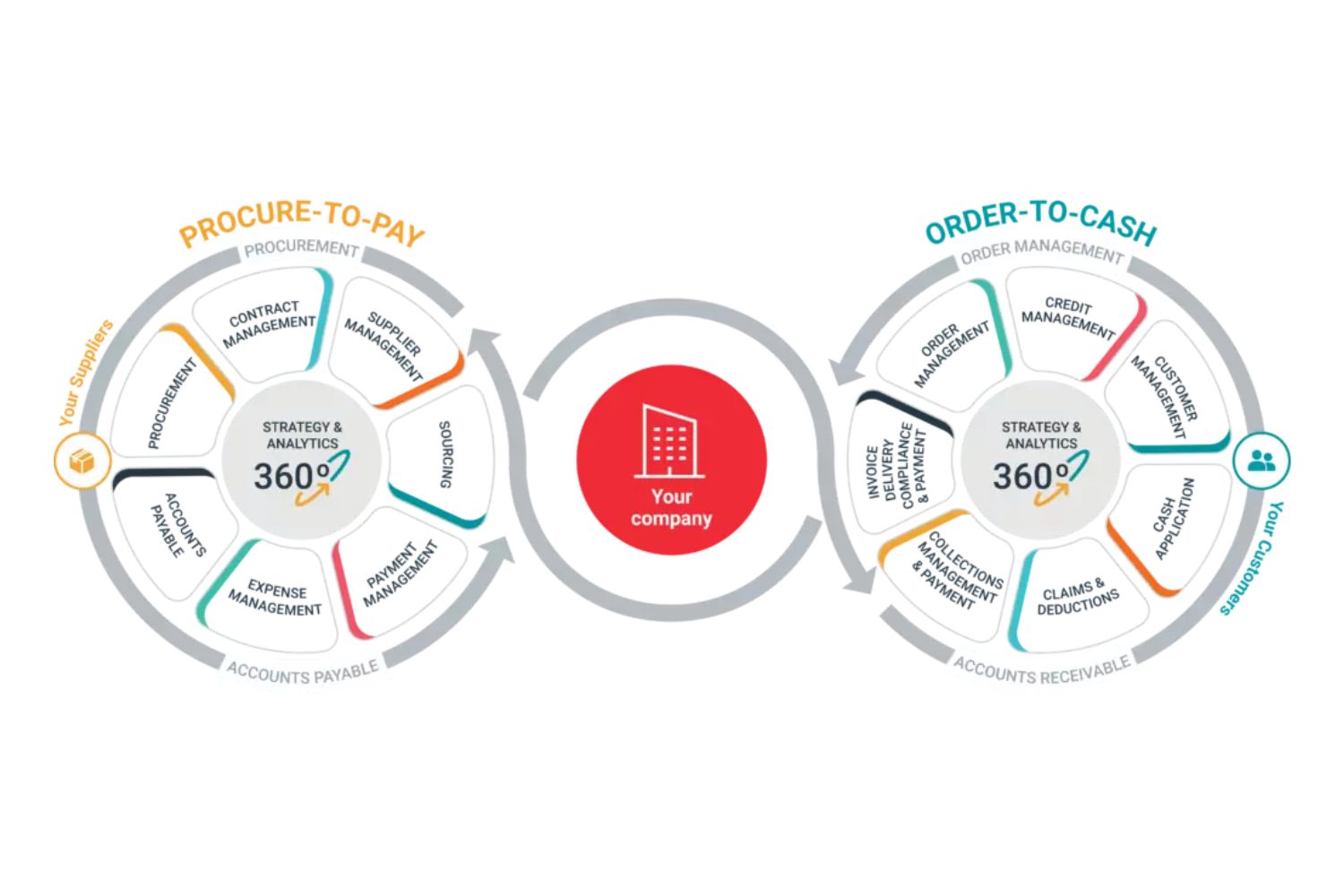Introduction
Efficient supply chain management is crucial for organizations to optimize their operations and achieve a competitive edge in today’s dynamic market. One of the key challenges faced by companies is how to reduce their inventory investments while simultaneously improving customer satisfaction. The ability to strike a delicate balance between minimizing costs and meeting customer demands is essential for long-term success.
An excessive inventory investment ties up valuable capital and resources. On the other hand, inadequate inventory levels can lead to stockouts and unhappy customers. Therefore, organizations need to adopt strategies and practices that help them manage inventory effectively.
In this article, we will explore various approaches and techniques that can assist organizations in reducing their inventory investments while enhancing customer satisfaction. These methods range from accurate demand forecasting to advanced inventory management systems.
By implementing these strategies, organizations can achieve a lean and agile supply chain that minimizes costs, improves responsiveness to customer needs, and enhances overall operational efficiency.
Let’s dive into the details of each approach and understand how they contribute to inventory optimization and customer satisfaction.
Efficient Supply Chain Management
Efficient supply chain management is the foundation for reducing inventory investments while enhancing customer satisfaction. It involves carefully planning and coordinating all activities involved in the flow of goods, services, and information from the initial supplier to the final customer.
An efficient supply chain begins with a thorough understanding of customer demand patterns and preferences. By analyzing historical data, market trends, and customer feedback, organizations can accurately forecast future demand and align their inventory levels accordingly.
Another crucial aspect of efficient supply chain management is maintaining strong relationships with suppliers and partners. Collaborating closely with suppliers can lead to benefits such as vendor-managed inventory (VMI) and collaborative planning, forecasting, and replenishment (CPFR).
VMI involves the supplier taking responsibility for monitoring and replenishing the customer’s inventory. This allows the customer to reduce inventory carrying costs and frees up valuable warehouse space. CPFR involves sharing sales, inventory, and production data between the customer and supplier to improve forecast accuracy and coordination.
Efficient supply chain management also includes optimizing transportation and logistics processes. Techniques such as cross-docking, drop shipping, and consignment inventory can help reduce inventory holding costs and improve order fulfillment speed.
Cross-docking eliminates the need for intermediate storage by directly transferring goods from inbound to outbound trucks, minimizing handling and storage costs. Drop shipping involves shipping products directly from the supplier to the customer, reducing the need for warehouse storage altogether. Consignment inventory allows suppliers to keep their products in the customer’s warehouse until they are sold, transferring ownership only when the customer’s customer makes a purchase.
Lastly, centralized inventory control is essential for efficient supply chain management. By consolidating inventory in a central location, organizations can achieve economies of scale, streamline logistics, and avoid duplication of efforts.
Overall, efficient supply chain management is a multifaceted approach that requires careful planning, collaboration, and optimization of various processes. By adopting these practices, organizations can reduce inventory investments while improving customer satisfaction.
Accurate Demand Forecasting
Accurate demand forecasting is a critical component of efficient supply chain management. By accurately predicting customer demand, organizations can optimize their inventory levels, minimize stockouts, and reduce excess inventory.
To achieve accurate demand forecasting, organizations can leverage historical sales data, market research, and advanced analytical techniques. By analyzing past sales patterns, seasonal trends, and market dynamics, organizations can develop a solid understanding of demand fluctuations and adjust their inventory levels accordingly.
In addition to historical data, organizations can also gather valuable insights by engaging in market research activities. This can involve conducting customer surveys, monitoring social media trends, and studying industry reports. These activities help organizations to stay in tune with customer preferences, changing market conditions, and emerging trends, allowing for more accurate demand forecasting.
Advanced analytical techniques, such as statistical models and machine learning algorithms, can further enhance the accuracy of demand forecasting. These techniques can identify patterns, correlations, and hidden relationships in large datasets, providing more accurate predictions.
Furthermore, organizations can collaborate closely with key customers and suppliers to gather and validate demand-related information. This collaborative approach, known as demand sensing, can provide real-time insights into demand fluctuations, helping organizations respond swiftly and proactively.
Accuracy in demand forecasting enables organizations to adopt a just-in-time (JIT) inventory management approach. With JIT, inventory is acquired and used precisely when it is needed, minimizing the need for carrying excess inventory. This approach helps organizations reduce inventory investments while ensuring products are available to meet customer demands.
By investing in accurate demand forecasting techniques and leveraging advanced analytical tools, organizations can optimize their inventory levels, reduce carrying costs, and enhance customer satisfaction by consistently meeting demand.
Just-in-Time (JIT) Inventory Management
Just-in-Time (JIT) inventory management is a strategy that focuses on minimizing inventory levels by receiving goods or materials right when they are needed in the production or distribution process. The ultimate goal of JIT is to reduce waste, improve operational efficiency, and enhance customer satisfaction.
JIT relies on accurate demand forecasting and close coordination with suppliers to ensure that inventory is delivered at the right time in the right quantities. This approach eliminates the need for excess inventory, reduces storage costs, and minimizes the risk of obsolescence.
Implementing JIT requires strong supplier partnerships and reliable delivery systems to ensure that materials and products are available exactly when they are needed. Organizations must establish efficient communication channels and establish trust to ensure smooth collaboration.
JIT inventory management is often associated with lean manufacturing practices, which focus on eliminating non-value-added activities and optimizing process flows. By reducing inventory buffers and implementing efficient production processes, organizations can respond quickly to changes in customer demand, minimize lead times, and reduce costs.
One of the key benefits of JIT inventory management is improved efficiency in handling and storing inventory. With reduced inventory levels, organizations can optimize warehouse space and streamline logistics processes. This leads to faster order fulfillment, fewer stockouts, and increased customer satisfaction.
Implementing JIT requires careful planning and continuous monitoring of key performance metrics such as lead time, order cycle time, and on-time delivery. By closely monitoring and analyzing these metrics, organizations can identify bottlenecks and areas for improvement, leading to further refinements in inventory management processes.
While JIT offers numerous benefits, organizations must also be mindful of potential risks. Reliance on a just-in-time supply chain leaves little room for errors or disruptions in the delivery process. Organizations must have contingency plans in place to address unforeseen events such as supplier delays or natural disasters.
Overall, JIT inventory management is a powerful strategy that allows organizations to reduce inventory investments while improving operational efficiency. By aligning inventory levels with customer demand, organizations can optimize resources, reduce costs, and enhance customer satisfaction.
Vendor-Managed Inventory (VMI)
Vendor-Managed Inventory (VMI) is a collaborative approach in which the supplier takes responsibility for monitoring and replenishing the customer’s inventory. With VMI, the supplier has direct visibility into the customer’s inventory levels and takes proactive action to ensure that stock is replenished before it runs out.
In a traditional inventory management setup, customers are responsible for forecasting demand, placing orders, and managing inventory levels. However, VMI shifts this responsibility to the supplier, allowing for better coordination and inventory optimization.
One of the key advantages of VMI is that it can help reduce inventory carrying costs for the customer. Since the supplier is responsible for managing inventory levels, the customer can free up valuable working capital and warehouse space that would otherwise be tied up in excess inventory.
VMI also enables better inventory planning and demand forecasting. With direct access to the customer’s inventory data, the supplier can analyze trends, identify patterns, and adjust production and supply accordingly. This leads to more accurate demand forecasting, minimized stockouts, and reduced excess inventory.
The success of VMI relies on effective collaboration and communication between the customer and the supplier. Both parties must have a clear understanding of each other’s needs, expectations, and performance metrics. Regular communication and sharing of real-time data contribute to seamless inventory management.
Implementing VMI requires trust and a strong partnership between the customer and supplier. The supplier must have access to real-time inventory information, while the customer must have confidence in the supplier’s ability to manage inventory effectively.
VMI can be particularly beneficial in industries with high demand volatility or frequent product changes. It can enhance responsiveness to changing market conditions and improve order fulfillment speed, leading to increased customer satisfaction.
While VMI offers numerous advantages, it is not suitable for all types of products or industries. It works best when there is a stable and reliable supply chain relationship, and when the supplier has the necessary capabilities to manage the customer’s inventory effectively.
In summary, Vendor-Managed Inventory (VMI) is a collaborative approach that allows suppliers to take responsibility for managing and replenishing the customer’s inventory. By leveraging real-time data and effective communication, VMI can reduce inventory carrying costs, improve demand forecasting, and enhance customer satisfaction.
Collaborative Planning, Forecasting, and Replenishment (CPFR)
Collaborative Planning, Forecasting, and Replenishment (CPFR) is a strategy that involves sharing sales, inventory, and production data between a customer and its suppliers to improve forecast accuracy, enhance inventory planning, and drive supply chain efficiency.
CPFR aims to align the planning and replenishment processes between the customer and its suppliers, enabling better coordination and synchronization throughout the supply chain. By sharing information and collaborating closely, all parties can work together to meet customer demand while minimizing inventory holding costs.
One of the key benefits of CPFR is improved demand forecasting accuracy. By sharing real-time sales data and demand information, the customer and its suppliers can analyze trends and patterns more effectively, leading to more accurate forecasts. With accurate forecasts, inventory levels can be adjusted accordingly, minimizing the risk of stockouts or excess inventory.
CPFR also enables better inventory planning and replenishment. By sharing inventory data, production capabilities, and lead times, the customer and suppliers can optimize the timing and quantities of inventory orders. This helps to reduce lead times, improve order fulfillment speed, and enhance overall supply chain efficiency.
Effective collaboration is essential for successful CPFR implementation. It requires open communication, trust, and a shared understanding of goals and objectives. Through regular meetings, information sharing platforms, and joint decision-making, the customer and its suppliers can synchronize their activities and streamline inventory management.
CPFR can be particularly beneficial in industries with high demand volatility, short product life cycles, or fragmented supply chains. It facilitates better coordination and responsiveness to rapidly changing market conditions, reducing the risk of stockouts and improving customer satisfaction.
Implementing CPFR requires the use of technology and systems to facilitate data sharing and collaboration. Advanced software tools, such as integrated planning systems and demand forecasting software, can help automate the exchange of information and streamline the CPFR process.
Overall, Collaborative Planning, Forecasting, and Replenishment (CPFR) is a powerful approach to improving supply chain efficiency and inventory management. By enhancing forecast accuracy, optimizing inventory levels, and promoting collaboration, organizations can reduce costs, improve customer satisfaction, and achieve a competitive advantage in the marketplace.
Cross-Docking
Cross-docking is a logistics technique that involves transferring goods directly from inbound to outbound trucks, with little to no time spent in storage. This approach eliminates the need for traditional warehousing and storage space, resulting in streamlined logistics and reduced inventory holding costs.
With cross-docking, goods are received from suppliers and then sorted and staged for immediate shipment to customers. The goal is to minimize handling, storage time, and inventory levels while expediting the delivery process.
One of the key benefits of cross-docking is improved order fulfillment speed. Because goods are transferred directly to outbound trucks, they can reach customers more quickly. This reduces lead times and enhances customer satisfaction by ensuring timely delivery.
Cross-docking is particularly useful for products with a short shelf life or fast-moving consumer goods that require rapid distribution. By bypassing the storage phase, perishable items can be delivered to customers while they are still fresh, reducing the risk of spoilage.
This logistics technique is also beneficial for reducing infrastructure and storage costs. With reduced warehouse space requirements, organizations can minimize their capital investment and focus on more value-added activities within the supply chain.
Implementing cross-docking requires efficient coordination and communication between suppliers, carriers, and customers. Timely delivery and accurate documentation are crucial to ensure that goods are quickly transferred to outbound trucks without errors.
However, it is important to note that cross-docking may not be suitable for all products or industries. Items that require quality inspections, customization, or storage due to low demand or seasonal fluctuations may not lend themselves well to the cross-docking approach.
Overall, cross-docking is a logistics strategy that allows organizations to bypass traditional warehousing and storage processes, improving order fulfillment speed and reducing costs. By embracing this technique, organizations can enhance their supply chain efficiency, optimize inventory management, and deliver products to customers more quickly.
Drop Shipping
Drop shipping is a fulfillment method in which retailers do not keep goods in stock but instead transfer customer orders and shipment details to the manufacturer, wholesaler, or another retailer who then directly ships the products to the customer. This allows retailers to eliminate the need for traditional inventory storage and shipping processes, reducing costs and improving operational efficiency.
One of the key advantages of drop shipping is the ability to offer a wide range of products without the need for upfront inventory investments. Retailers can partner with multiple suppliers or manufacturers and showcase their products on their online platforms, websites, or catalogs. When a customer places an order, the retailer simply forwards the order details to the supplier, who ships the products directly to the customer.
Drop shipping can significantly reduce upfront costs for retailers. They do not need to invest in inventory, warehouse space, or packaging materials. This makes it an attractive option for entrepreneurs and small businesses looking to start an e-commerce venture with limited capital.
Another benefit of drop shipping is the flexibility it offers in terms of product assortment. Retailers can easily add or remove products from their online stores without the risk of being stuck with excess inventory. This allows them to respond quickly to market trends and customer demands, keeping their product offerings fresh and relevant.
Drop shipping also minimizes the risk of inventory obsolescence and excess stock. Since products are only purchased from suppliers once a customer places an order, there is no need to hold inventory that might become obsolete or outdated over time. This reduces costs and ensures that customers receive the latest products available.
However, drop shipping does come with its challenges. Retailers must carefully choose and vet their suppliers to ensure product quality, reliability, and timely delivery. Communication and coordination with suppliers are crucial to ensure efficient order processing and customer satisfaction.
Additionally, retailers who rely on drop shipping may have less control over shipping times and packaging. It is important to set clear expectations with customers regarding delivery times and be transparent about the drop shipping process to manage customer satisfaction effectively.
Overall, drop shipping is a fulfillment method that can benefit retailers by reducing upfront costs, offering a wide product assortment, and minimizing inventory risks. By leveraging strategic partnerships with suppliers, retailers can provide a satisfying customer experience while focusing on marketing, sales, and building their brand.
Consignment Inventory
Consignment inventory is an arrangement between a supplier and a customer where the supplier retains ownership of the goods until they are sold. The goods are placed in the customer’s inventory, but the customer is not required to pay for them until they are actually sold to the end customer. This arrangement offers benefits for both the supplier and the customer.
For suppliers, consignment inventory allows them to maintain control over their inventory and minimize the risk of excess stock. The supplier only receives payment when the goods are sold, reducing their financial risk. Additionally, consignment inventory helps suppliers build strong relationships with customers by offering a convenient and flexible arrangement.
For customers, consignment inventory provides them with access to a wide range of products without the burden of large upfront investments. They can stock a variety of products and display them to potential customers without tying up their capital. This is particularly beneficial for retailers who want to offer a diverse product range or test new products in their stores.
Consignment inventory also helps customers reduce holding costs and the risk of inventory obsolescence. Since the supplier still owns the inventory, the customer does not have to worry about the financial repercussions of slow-moving or outdated products. This allows them to focus on selling the inventory and generating revenue.
Effective management of consignment inventory requires clear communication, trust, and accurate inventory tracking. Both the supplier and the customer need to establish a transparent process for monitoring inventory levels, sales, and replenishment. This includes regular inventory updates, sales reports, and agreed-upon terms for payment and replenishment.
Consignment inventory is commonly used in industries such as retail, where specialty or high-value products are involved. It allows retailers to display and sell products without committing to purchasing them upfront. Additionally, consignment inventory can be beneficial for suppliers of perishable goods or products with short shelf lives as it ensures fresh and up-to-date inventory in the market.
Despite the advantages, consignment inventory has its challenges. For suppliers, there is a risk of loss if the customer fails to sell the products or if there are issues with proper reporting and payment. For customers, it is essential to carefully manage the consignment inventory to avoid stockouts or situations where the customer relies too heavily on consigned goods rather than investing in their own inventory.
In summary, consignment inventory is a mutually beneficial arrangement between suppliers and customers. It enables customers to access a wide variety of goods without upfront investment while allowing suppliers to maintain control over their inventory. Effective monitoring and coordination are imperative for successful consignment inventory management.
Centralized Inventory Control
Centralized inventory control is a strategy that involves consolidating inventory management activities in a central location within an organization. It aims to streamline processes, optimize inventory levels, and improve overall supply chain efficiency.
With centralized inventory control, the organization maintains a single location or dedicated department responsible for managing inventory across multiple locations, branches, or distribution centers. This centralization allows for better coordination, standardization of processes, and more effective utilization of resources.
One of the key benefits of centralized inventory control is improved visibility and control over inventory levels. With a central inventory repository and standardized tracking systems, organizations can monitor inventory levels in real-time, identify trends, and make informed decisions about replenishment and demand planning.
Centralized inventory control also enables organizations to optimize inventory distribution. By analyzing demand patterns and inventory data, organizations can strategically allocate inventory to different locations or channels to meet customer demands while minimizing stockouts and excess inventory.
Consolidating inventory management in a central location also facilitates better coordination with suppliers. Centralized control allows organizations to negotiate better terms with suppliers, leverage economies of scale, and improve overall supplier performance through closer collaboration and communication.
Moreover, centralized inventory control promotes standardization and consistency in inventory management processes. This reduces the risk of errors, improves accuracy in order fulfillment, and enhances operational efficiency. It also simplifies the training and onboarding process for new employees, as they only need to learn one centralized system.
However, centralized inventory control also has its challenges. It requires strong communication and collaboration between the central inventory management team and the various departments or locations that rely on inventory. Effective communication channels and information sharing systems are essential for successful implementation.
Furthermore, organizations must carefully consider the trade-off between centralization and localized decision-making. While centralization provides better control and coordination, it also reduces the autonomy and flexibility of individual locations or departments. Striking the right balance is crucial to ensure that the organization can respond effectively to local market demands while capitalizing on the benefits of centralized inventory control.
In summary, centralized inventory control is a strategy that consolidates inventory management activities in a central location within an organization. It provides improved visibility, control, and coordination, leading to optimized inventory levels and enhanced supply chain efficiency. However, organizations must carefully manage the challenges and find the right balance between centralization and localized decision-making.
Efficient Order Fulfillment Processes
Efficient order fulfillment processes play a crucial role in reducing inventory investments while improving customer satisfaction. Streamlining and optimizing these processes ensure that orders are processed, picked, packed, and shipped in a timely and accurate manner.
One key aspect of efficient order fulfillment is order visibility. Organizations must have real-time insight into inventory levels, order status, and shipping information. This enables them to proactively manage customer expectations, quickly identify potential bottlenecks, and take corrective actions when necessary.
Effective inventory management plays a critical role in order fulfillment efficiency. Organizations should ensure that inventory is accurately tracked and organized, with clear identification and labeling systems. This enables smooth and fast retrieval of products when orders are received, minimizing delays and reducing errors.
Picking and packing processes are another focal point for efficiency improvements. Implementing best practices such as batch picking, zone picking, and the use of barcodes or RFID technology can significantly enhance order accuracy and speed. By organizing inventory and optimizing pick paths, organizations can reduce the time and effort required to fulfill orders.
Automation plays a vital role in streamlining order fulfillment. Implementing technologies like warehouse management systems (WMS) and order management systems (OMS) can enhance visibility, automate processes, and optimize resource utilization. Automated sorting, scanning, and labeling systems further contribute to efficient order fulfillment operations.
Efficient packaging is also essential in order fulfillment. Choosing the right packaging materials and sizes helps minimize waste, optimize shipping costs, and protect products during transit. Standardizing packaging processes and using automated packing equipment can improve consistency and speed while reducing the risk of errors.
Effective collaboration and communication between departments involved in order fulfillment are crucial. Clear and streamlined communication channels help ensure that all relevant teams, including sales, customer service, inventory management, and logistics, are aligned and working together towards a common goal of efficient order fulfillment.
Continuous monitoring and performance analysis are essential for ongoing improvement. Key performance indicators (KPIs) such as order cycle time, order fill rate, and inventory turnover should be tracked and analyzed regularly. This helps identify areas for improvement, address bottlenecks, and implement strategies to enhance efficiency and customer satisfaction.
In summary, efficient order fulfillment processes are essential for reducing inventory investments and meeting customer expectations. By focusing on visibility, inventory management, picking and packing, automation, packaging, collaboration, and continuous improvement, organizations can optimize their order fulfillment operations, minimize costs, and enhance customer satisfaction.
Advanced Inventory Management Systems
Advanced inventory management systems are powerful tools that can revolutionize the way organizations handle their inventory. These systems utilize technology and automation to optimize inventory levels, enhance accuracy, and improve overall efficiency.
One of the primary benefits of advanced inventory management systems is improved visibility and control. These systems provide real-time insights into inventory levels, stock movements, and demand patterns. With accurate and up-to-date information, organizations can make informed decisions about purchasing, replenishment, and order fulfillment.
Inventory forecasting and demand planning capabilities are another key feature of advanced inventory management systems. By analyzing historical data, market trends, and customer behavior, these systems can generate accurate demand forecasts. This helps organizations align their inventory levels with anticipated demand, minimizing the risk of stockouts or excess inventory.
Automated order processing and inventory replenishment are major advantages of advanced systems. These systems can automatically generate purchase orders, track order status, and trigger replenishment based on predefined rules or thresholds. This streamlines the entire replenishment process, reducing manual errors and delays.
Integration with other business systems, such as sales, customer relationship management (CRM), and accounting, is another area where advanced inventory management systems excel. Seamless integration allows for easier data sharing, improved communication, and enhanced workflow automation between different departments or functions.
Barcode scanning and RFID technologies are commonly integrated into advanced inventory management systems. These technologies enable efficient tracking and tracing of inventory, minimizing errors, and improving order accuracy. They also facilitate cycle counting and physical inventory audits, simplifying the process and reducing the time required.
Warehouse management functionalities are often included in advanced inventory management systems. These functionalities incorporate features like bin/location tracking, optimized picking paths, and efficient storage utilization. Warehouse operations become more streamlined, enhancing productivity and reducing unnecessary movements.
Advanced inventory management systems also provide insights and analytics through reporting and dashboards. Organizations can monitor key performance indicators (KPIs), such as inventory turnover rate, carrying costs, and order fill rate. These metrics help identify trends, spot areas for improvement, and drive continuous optimization.
Implementation of an advanced inventory management system requires careful planning, system customization, and employee training. Integrating the system into existing processes and ensuring data accuracy during the transition is crucial. Ongoing maintenance and system updates are also necessary to leverage the system’s full potential.
In summary, advanced inventory management systems provide organizations with enhanced visibility, improved forecasting capabilities, automated order processing, and integration with other business systems. By leveraging technology and automation, these systems optimize inventory levels, streamline workflow, and drive operational efficiency.
Continuous Improvement and Analysis
Continuous improvement and analysis are essential components of effective inventory management. Organizations must constantly evaluate their processes, performance, and data to identify areas for improvement and take proactive action.
One of the key aspects of continuous improvement is data analysis. Organizations need to collect and analyze relevant data related to inventory levels, demand patterns, order fulfillment, and supplier performance. This analysis provides valuable insights into trends, bottlenecks, and opportunities for optimization.
By leveraging data analysis, organizations can identify and address inventory-related issues such as excess stock, stockouts, and slow-moving items. They can adjust their inventory levels, reorder points, and safety stock to better align with customer demand, prevent stockouts, and reduce carrying costs.
Continuous improvement involves reviewing and refining inventory management processes. Organizations should look for process inefficiencies, errors, or redundancies and implement corrective actions. This can involve revising workflows, introducing automation, or streamlining communication channels between different teams or departments.
Regular performance monitoring is crucial for both individual processes and overall inventory management. Key performance indicators (KPIs), such as inventory turnover rate, order cycle time, and order fill rate, should be tracked and compared against benchmarks. This helps organizations measure their progress and identify areas that require attention.
Root cause analysis is another important tool for continuous improvement. When issues or errors occur, organizations should investigate and determine the underlying causes. By addressing these root causes, rather than treating symptoms, organizations can prevent recurring problems and improve the overall effectiveness of their inventory management.
Continuous improvement also necessitates a culture of learning and innovation. Organizations should encourage their employees to share ideas, provide feedback, and participate in problem-solving initiatives. This creates a collaborative environment where continuous improvement becomes ingrained in the company’s DNA.
Additionally, organizations can leverage technology to facilitate continuous improvement. Advanced inventory management systems, data analytics tools, and automation capabilities provide valuable insights and help identify improvement opportunities. Regular system reviews, software updates, and training sessions ensure that organizations fully utilize the capabilities offered by technology solutions.
Continuous improvement should be an ongoing process rather than a one-time effort. Organizations should regularly conduct reviews, analyze data, and seek feedback from customers, suppliers, and employees. By embracing a mindset of continuous improvement, organizations can adapt to changing market dynamics, improve their competitiveness, and enhance customer satisfaction.
In summary, continuous improvement and analysis are crucial for effective inventory management. By analyzing data, refining processes, monitoring performance, addressing root causes, fostering a culture of learning, leveraging technology, and striving for ongoing improvement, organizations can optimize their inventory management practices and achieve operational excellence.
Conclusion
Reducing inventory investments while improving customer satisfaction is a complex task that requires organizations to adopt a range of strategies and techniques. Efficient supply chain management, accurate demand forecasting, just-in-time inventory management, vendor-managed inventory, and collaborative planning are among the key approaches that organizations can leverage.
Efficient order fulfillment processes, advanced inventory management systems, and continuous improvement play vital roles in achieving the desired outcomes. Streamlining processes, leveraging technology, and enhancing visibility and control over inventory levels contribute to optimizing inventory investments while meeting customer expectations.
Accurate demand forecasting ensures that inventory levels are aligned with anticipated customer demand, minimizing stockouts and excess inventory. Just-in-time inventory management helps organizations reduce costs by acquiring inventory precisely when it is needed, eliminating the need for excessive carrying costs.
Vendor-managed inventory facilitates collaboration with suppliers, allowing for optimized inventory levels and improved demand planning. Collaborative planning and replenishment drive better alignment among stakeholders, leading to increased forecast accuracy and inventory optimization.
The use of cross-docking, drop shipping, and consignment inventory offers flexibility and efficiency in inventory management. These strategies help minimize storage costs, improve order fulfillment speed, and reduce the risk of inventory obsolescence.
Centralized inventory control provides visibility, coordination, and standardization across locations, improving overall supply chain efficiency. By consolidating inventory management efforts, organizations can optimize inventory distribution while minimizing costs.
Efficient order fulfillment processes ensure seamless and accurate processing, picking, packing, and shipping of customer orders. Automation, integration with other business systems, and effective collaboration contribute to quick and error-free order fulfillment.
Advanced inventory management systems leverage technology to enhance visibility, forecasting, automation, and analytics. These systems provide real-time insights, optimize inventory replenishment, and streamline warehouse operations.
Lastly, continuous improvement and analysis are integral to ongoing optimization of inventory management practices. By analyzing data, refining processes, monitoring performance, and fostering a culture of learning, organizations can constantly improve inventory management effectiveness.
In conclusion, by implementing the strategies mentioned above and embracing ongoing improvement, organizations can reduce inventory investments while improving customer satisfaction. Effective inventory management not only reduces costs but also ensures that the right products are available at the right time, meeting customer demands and gaining a competitive advantage in the marketplace.

























